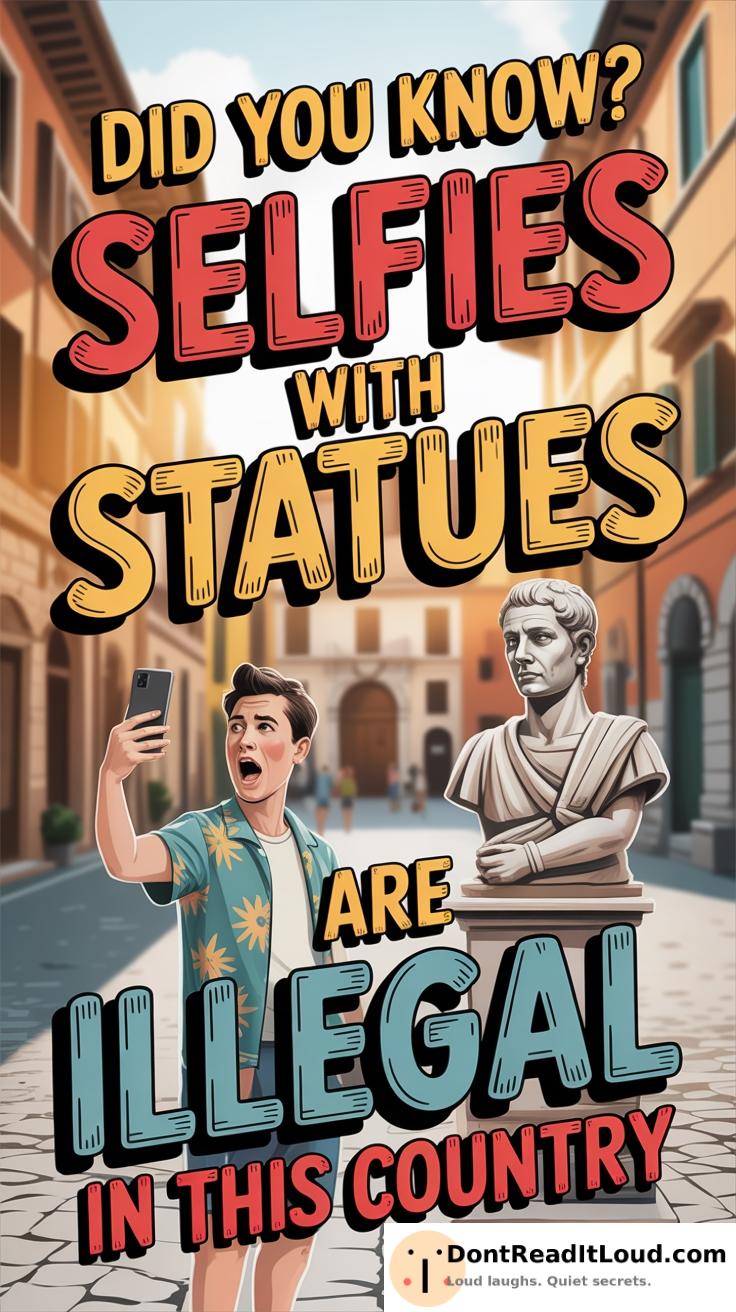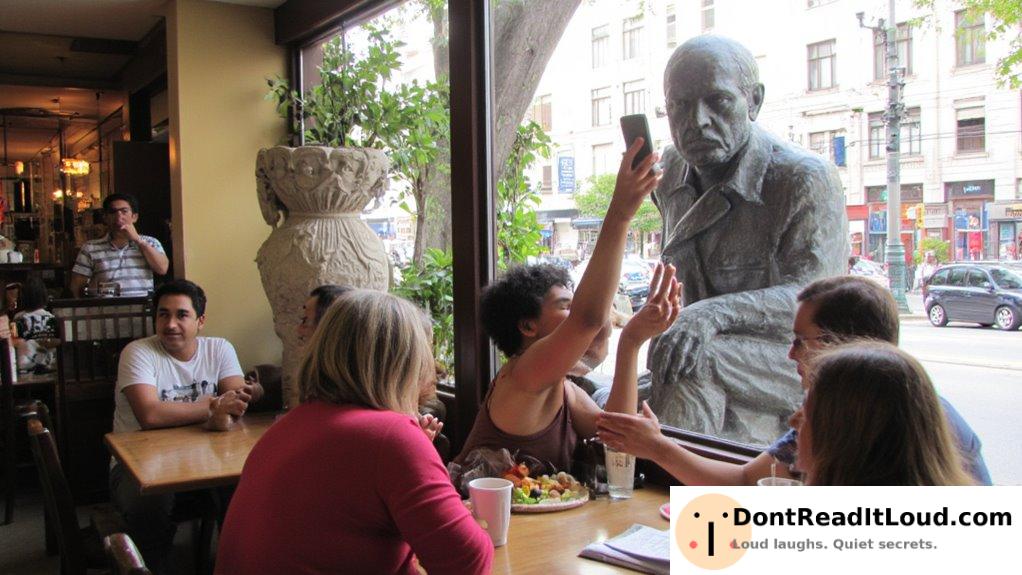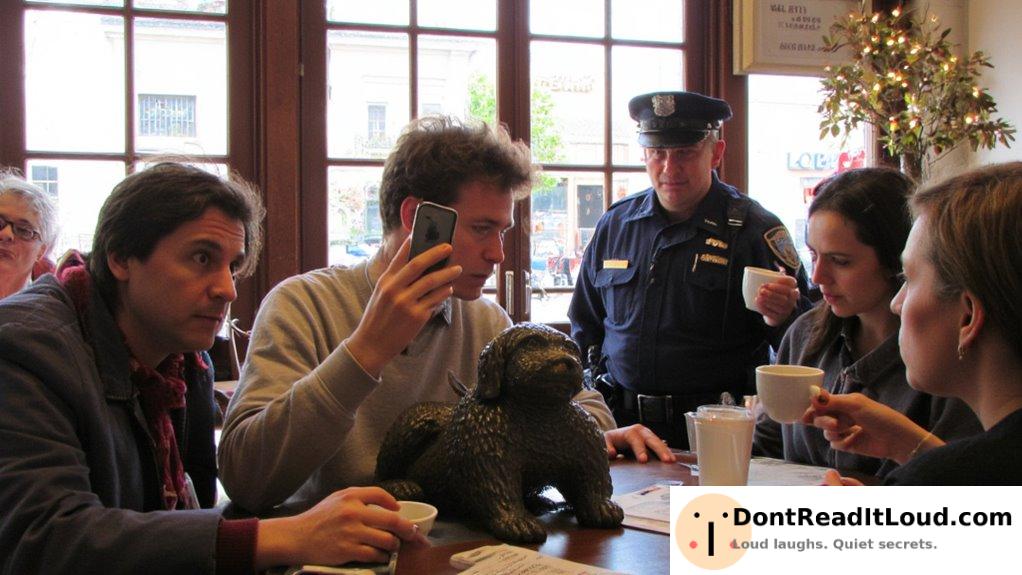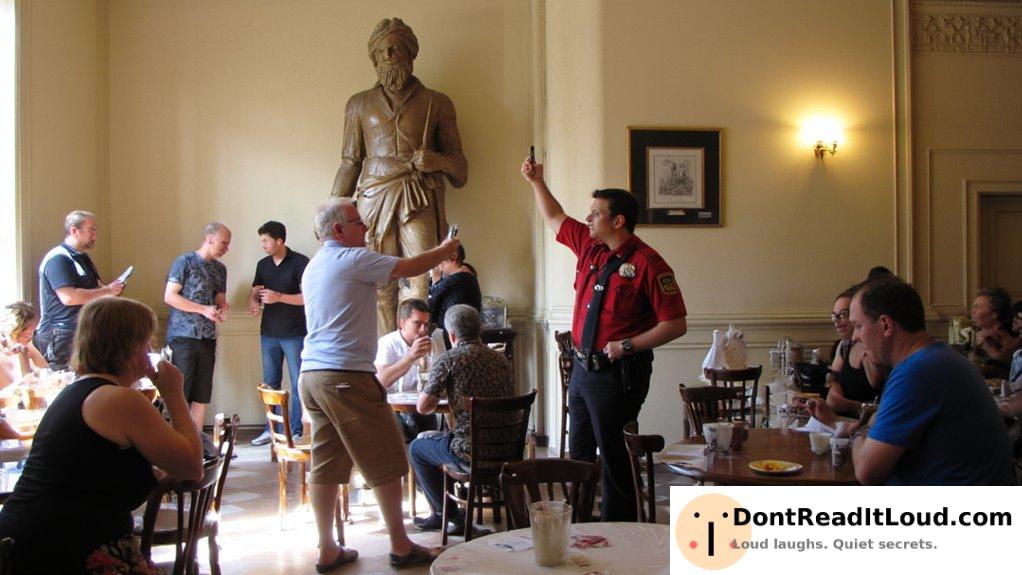
In Italy, taking selfies with statues is against the law. This rule helps safeguard the nation’s historic monuments and art from harm caused by tourism. By restricting personal photos, Italy encourages visitors to show respect and value its heritage. Offenders may face fines or be required to attend workshops on cultural preservation. Italy’s policy highlights the importance of protecting cultural treasures for future generations.
The Origin of This Law

The law prohibiting selfies with statues originated in Italy as part of broader regulations to protect historical monuments and artworks. These measures were introduced in response to rising concerns about damage and disrespect at cultural heritage sites.
Italy, home to masterpieces by artists like Michelangelo and Bernini, has struggled to preserve its treasures amid heavy tourist traffic each year. The law aimed to prevent harm to these priceless works caused by people trying to take selfies.
Several high-profile incidents prompted this legislation. In 2013, an American tourist broke a finger off a 600-year-old statue in Florence while posing for a photo.
In Rome, sites like the Trevi Fountain and Spanish Steps have suffered from vandalism and overcrowding, raising alarms about their preservation.
Such events underscored the need for stricter protection of Italy’s cultural heritage. As a result, the government introduced laws banning selfies with statues and imposed fines for violations.
This action shows Italy’s dedication to safeguarding its historical legacy for future generations.
Why This Law Exists

The law banning selfies with statues in certain countries is upheld for practical, cultural, and political reasons.
Practical Motivations:
Practically, this law aims to prevent damage to statues and historical monuments. People taking selfies might lean on or touch statues, causing accidental harm. Many statues are made from delicate materials and can suffer from erosion or breakage, so limiting close contact helps preserve them for the future.
Cultural Motivations:
Culturally, statues often hold deep meaning, representing key figures, events, or ideals. In some societies, they’re treated with great respect or even considered sacred. Taking selfies with these monuments can be viewed as trivializing important cultural symbols. The law encourages people to honor these sites in a way that matches local customs and traditions.
Political Motivations:
On a political level, the law helps reinforce national pride and identity. Statues usually commemorate significant moments or individuals in a country’s history. By protecting these monuments, governments emphasize their importance in the nation’s story. It also shows a dedication to respecting public spaces and the heritage they represent, helping to bring citizens together.
How This Law Reflects it’s Culture?

This law, which bans selfies with statues, highlights a strong cultural respect for historical and national monuments. Statues often honor important figures or events and are considered symbols of national pride and heritage. Restricting selfies underscores the need to treat these sites with reverence and avoid trivializing them.
In many cultures with rich histories, statues aren’t just art; they represent the achievements and values of past generations. They remind people of their history and inspire future generations.
Banning selfies helps preserve the dignity of these monuments, encouraging visitors to see them as places for reflection rather than just photo opportunities.
Additionally, this law may reflect cultural values of modesty and respect. Some societies expect visitors to approach historical sites with seriousness rather than using them for self-promotion. The selfie ban supports these expectations, promoting thoughtful engagement with cultural heritage.
What Happens If You Break This Law?

If someone in Country breaks the law by taking a selfie with a statue, they could face a range of consequences based on the situation and local laws.
- Fines: The most common penalty is a monetary fine. This could be a small fee for a first offense or higher for repeated violations. The amount depends on local rules and how serious the authorities consider the act.
- Legal Consequences: Offenders might be given a citation or required to appear in court. If the selfie causes damage to the statue or nearby property, charges could increase to vandalism or disturbing the peace. This may result in a criminal record or other lasting legal issues.
- Public Reaction: People may have different responses. Some might think the law is too strict and support taking selfies as a personal right. Others, especially those focused on protecting cultural sites, could see the action as disrespectful.
- Community Service: Instead of, or along with, fines, a person might need to perform community service. Tasks could include helping preserve landmarks or working on projects that promote respect for public spaces.
- Educational Programs: For first-time or younger offenders, authorities might require attendance at a workshop about cultural heritage. This helps explain why preserving monuments is important.
Could Other Countries Learn from This Law?

The law prohibiting selfies with statues in a specific country is an interesting case study in the balance between cultural preservation and personal freedom. Let’s compare this approach to how other countries handle similar situations and explore whether there are lessons to be learned or if the law is too unique to apply elsewhere.
Country with the Selfie Ban
In the country with the selfie ban, the law likely prioritizes the protection of cultural heritage and historical monuments. The reasoning could be that selfies can lead to overcrowding, potential damage to the statues, or disrespectful behavior.
The law serves to preserve the dignity and integrity of these national symbols.
Comparison with Other Countries
- Italy: In cities like Rome and Venice, there are strict regulations against sitting on or climbing statues and monuments. However, taking selfies isn’t explicitly banned. Instead, authorities focus on managing tourist behavior through fines and educational campaigns.
- India: India has implemented bans on certain types of photography in specific areas, particularly around monuments like the Taj Mahal. While selfies aren’t banned outright, there are restrictions aimed at preserving the site and ensuring the safety of visitors.
- United States: In the U.S., rules regarding selfies with statues are generally more relaxed. However, in national parks and certain historical sites, there are guidelines that visitors are encouraged to follow to prevent damage.
Lessons to be Learned
1. Cultural Sensitivity: Other countries can learn from the intent behind the selfie ban by promoting cultural sensitivity and respect for heritage.
This can be achieved through educational campaigns that inform tourists about the significance of their behavior.
2. Preservation Efforts: The focus on preserving cultural artifacts is something other countries might adopt.
This could involve creating designated areas for photography or employing technology to monitor and manage tourist interactions with monuments.
3. Balancing Freedom and Preservation: The key takeaway is finding a balance between allowing personal freedom and ensuring the preservation of historical sites.
Countries might consider implementing adaptable guidelines that cater to both aspects.
Is the Law Too Unique?
While the selfie ban may seem unique, the underlying principles of cultural preservation and respect are universal.
However, the outright ban mightn’t be practical or necessary in all contexts. Different countries have varying levels of resources, tourism volumes, and cultural value systems, which means the application of such a law would need to be context-specific.
Conclusion: What Makes this Law So Unique
The law banning selfies with statues distinguishes the country through its unique approach, combining cultural preservation with legal enforcement. Unlike most places that rely on physical barriers, this regulation addresses the impact of modern habits on cultural monuments. It recognizes that behaviors like taking selfies can unintentionally harm or disrespect historical artifacts, adding a new layer of protection.
What sets this law apart is its clear prohibition of personal photography with statues—something rarely seen elsewhere. It highlights the country’s dedication to protecting its heritage by restricting interactions that might cause damage.
Statues are elevated from mere attractions to revered symbols of national identity, deserving respect and careful treatment.
Other nations might consider similar rules to safeguard their own landmarks. By guiding how people interact with historic sites, countries can help ensure these treasures endure and foster greater appreciation among citizens. This law is a creative example of using legal measures to balance contemporary trends with the need to protect cultural history.



